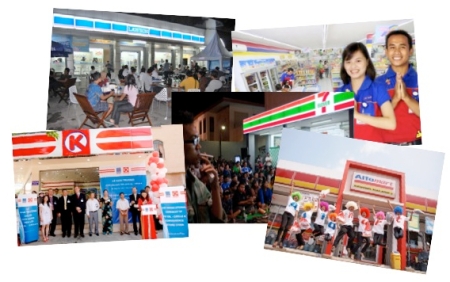In recent years, in many Asian markets, demographic and economic trends have coincided to create staggering growth for retail chains. Yet, while number of locations and foot-traffic is certainly growing, it is questionable whether this sharp increase in quantity of customers is being reflected in the quality and amount of spend per customer.

Indonesian Convenience Stores: More stores, lots of buzz, lots of shoppers — but room for more profit?
One clear example is in Indonesia, where the number of Convenience/Mini-market (CVS) stores have more than quadrupled since 2008. However, a recent study that G&M worked on with Deka Marketing Research clearly reveals that Indonesia’s retailers may be missing out on major opportunities when it comes to attracting and retaining the right “quality” of customers. It’s our belief that many of these issues are likely to found in other retail chains in other markets, and that part of the fault lies with the kind of research often being delivered to retailers. Here are a few key facts to illustrate what we saw in Indonesia:
- 8% of CVS visitors enter and leave without purchasing anything at all. This is not just people popping in and out and not finding the one item they wanted – many spend quite a long time in-store.
- Modern Indonesian CVS stores generally target the younger and ‘top-end’ socio-economic target group, and usually they succeed in getting such shoppers. Yet this does not guarantee more spending – in fact, older and SES “C” shoppers spent, per shopper, more in-store than younger, SES “A”.
- Recall/participation in in-store promotions was very low. If promotions are going on, people are not aware of them. Yet, when a shopper did participate in a promotion, their total shopping spend doubled. Better, more exciting, promotions are likely to be of major benefit in driving shopper spend in Indonesia.
- Most people are going into the store and buying precisely, and only, what they intended to buy. The number of items bought is usually low. Stores are failing to drive discretionary spend and impulse purchase (a key source of additional return elsewhere in the world)
- Most shoppers use multiple stores, yet spending in their “most often” store was notably higher than elsewhere. Similarly, we saw a direct positive correlation between amount spent and shopper’s rating of the store chain and their visit.
This, and other results in the study convinced us that CVS/Mini-market retailers in Indonesia have many opportunities to improve spend per shopper. Put simply, a greater focus on who is spending on what and when, and more creative thought about how to encourage shoppers’ to buy more, could pay dividends. It also seems clear that pre-store marketing and chain imagery is clearly very important, and have a surprisingly direct impact on spending and chain preference. We suspect many of these patterns will be apparent in other markets.
Interestingly, many of the issues identified were common to both “main street” international chain convenience stores (7-Eleven, Circle K, Lawson) and locally owned more “residential” mini-market chains (Alfamart, Indomaret). Almost all the stores in this broadly defined channel are attracting more shoppers, yet most of them seem to be missing opportunities to build more loyal and profitable shopper bases. (There are, however, some noticeable key differences between chains with spend per shopper in the highest ranking chain being almost double that of the bottom ranked chain).
This is, of course, not necessarily a “fault” of the retailers – building a presence across an archipelago as diverse as Indonesia is, to say the least, challenging and managers have to prioritise their efforts. This is an issue David and I have seen over many years of working in Asia – retailers quite naturally taking advantage of the markets natural growth and focussing effort on expanding their geographic footprints. Yet over the years we have also seen that chains who succeed over the longer-term are the ones that balance chasing store growth and foot-traffic with developing effective strategies to provide more value to the shoppers who are already coming into their stores.
One contributing factor, though, is that too often retail research either focuses on how shoppers report that they “felt” in store (satisfaction) or else concentrates more solely on “what” they bought or did (behaviour). Moreover too much retail research in Asia is based on recall, not on surveys that are in or near the store. (Sorry, but retail research of this sort has to be “in the moment” – recall is unreliable). In our view the links between pre-store buying intentions, in-store activity, reactions to the visit and actual buying patterns are too seldom explored. Yet if researchers are to help retailers think about practical strategies to improve spend per shopper it is precisely this kind of research that is needed. It’s a challenge we hope more researchers will take up.
G&M Would like to thank DEKA Marketing Research for permission to share some of the findings of this study. Founded in 1993 DEKA is one of Indonesia’s leading independent research agencies, working with many major international and local clients.
If you’d like more information on the Indonesian CVS/Mini-Market Report, please email us at info@gordon-mccallum.com



Nice insights. I think a lot of the in-store experience can be translated to the online shopping experience as well.